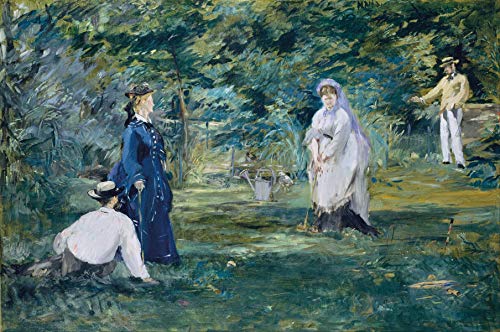by Michael Hofferber Copyright © 1994. All rights reserved.
Michael Hanner sprawls belly-first on the lawn, his nose just inches behind the yellow ball, his eyes fixed on the wicket up ahead. Satisfied with the way things are lined up, Hanner pushes himself away from the grass and brushes off his white tennis shorts and polo shirt. He grips his mallet firmly with two hands.
A soft breeze stirs the Oregon pines that rise in all directions. A black cat chases a lizard across the far end of the playing court. The hard blues sound of Roy Buchanan filters down from the stereo in Hanner's country home a hundred yards uphill as he pops the yellow ball with his mallet.
The balls clears the wicket cleanly and, with a solid "thock!" clips the black ball of his opponent that lay on the opposite side. It rolls toward the next wicket.
"Nice shot, honey," calls out Hanner's wife, Susie, from the sideline. She sits on a clean white bench in her clean white outfit, sipping a wine cooler and tending the "deadness board" that shows which colored balls are eligible to be "roqueted" -- hit by another ball -- in the American version of Six-Wicket Croquet.
Welcome to the Forest Lawn Mallet Club, one of 300 organized croquet clubs in the U.S. In 1977 there were just five such clubs in the U.S. and only about 100 active players. But the 1980s were a boom period for croquet and now there are dozens of established clubs from Pell City, Alabama, to Jackson Hole, Wyoming, attracting thousands of mallet-wielding members.
The game of croquet has two very different faces. On one side there's the backyard barbecue, the croquet set someone dug out from behind the lawn mower in the garage, the little wire hoops and the wobbly-headed mallets, the debate over who really remembers the rules, and the cries of children as they whack each other's colored balls into the petunias.
On the other side, there is the Beverly Hills country club tournament, the players in their dress whites holding gin and tonics on the sidelines, the hand-carved hardwood mallets and cast-iron wickets, the murmurs of polite conversation in a genteel British dialect.
More and more, these two sides are merging. Backyard players are discovering the English version of the sport and are making it their own. Take Jim Ott for instance, a 50-year-old painting contractor who joined the Forest Lawn club. He took up croquet, he says, because he finds it relaxing.
"I don't climb mountains and I don't go whitewater rafting. That isn't recreation for me," he explains. "I like to do something less stressful when I'm not working. I used to play darts. This game has very much the same feel to it. The pace is leisurely and the players don't take things too seriously. If they did, I think I would stop coming."
The Forest Lawn Mallet Club is not much more than a group of a dozen friends who got together 11 years ago and carved a dead-level croquet lawn out of a hillside woodlot. They put in a small clubhouse with a wooden deck overlooking the playing surface. Now they gather one evening a week, and sometimes on weekends, to play English-style croquet. Players often bring along cakes and quiches, wine and beer, for an informal courtside potluck.
The Hanners operate a bed-and-breakfast, "Country House," near Creswell, and guests are often included in the games and meals.
Croquet has been around since at least the 13th century. A cross between lawn bowling and pool, it was invented by the French and adopted by the English, who quickly popularized it as their own. Tournament croquet, as the English game is called, requires more strategy than the backyard version. Like a rolling chess match, it often attracts mathematically minded players who enjoy games.
In tournament croquet, six wickets are arranged in twin triangles on opposite sides of a center peg. Each team hits two different colored balls (black-and-blue, red-and-yellow) first clockwise, then counter-clockwise, through the wickets. Whoever clears the most wickets at the end of a pre-set time limit wins the match.
Out on the lawn Hanner's opponent has made what he describes as a "fatal mistake." His black ball is "dead" on his yellow ball, meaning he can't hit it for an extra shot.
"In this game you can't do much with one shot," Hanner explains. Players hit balls together to gain extra shots as they maneuver into position for a clean pass through the narrow hoops, but no ball can hit another colored ball twice before passing through a wicket.
The black ball is what croquet players call "three ball dead," meaning it has no other balls on the court to hit for extra shots.
Pacing the court nervously in a pair of flat-bottomed bowling shoes, the slightly-built opponent measures his options. If he attempts a 30-foot shot at a wicket and misses, Hanner can use the black ball to "run a break," which is the croquet equivalent of clearing a table in billiards. Instead, he elects to play conservatively. He pounds his ball out of bounds in the far corner.
Hanner, an intense competitor, seeks to maintain a "Zen approach" to his game, even when he senses victory in his grasp.
"I consciously try not to think," he explains before time runs out on his decisive win. "As soon as you start thinking about making a wicket you're going to miss."



